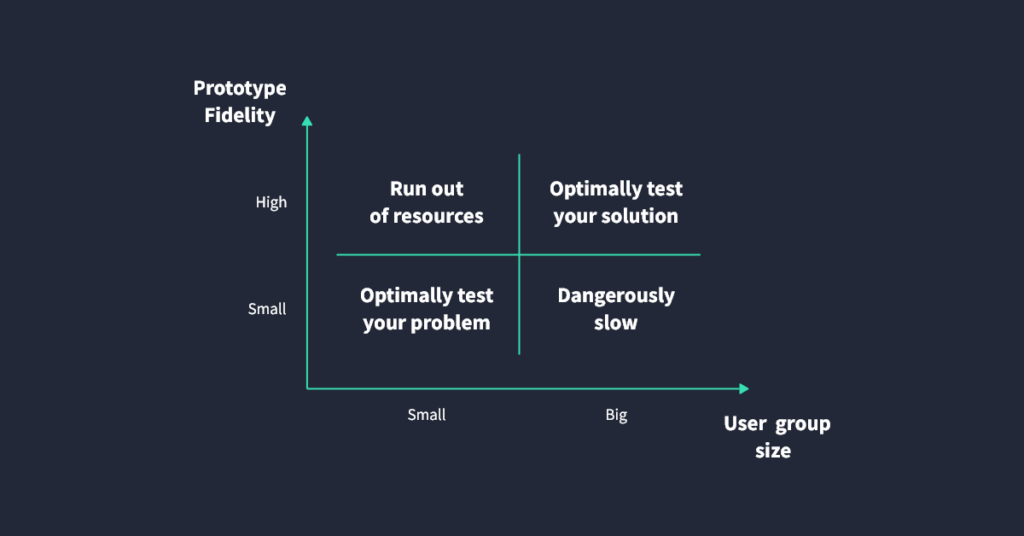Creating software is difficult, but selling it and getting people to use it is far more complicated. The ultimate goal of every project is to have as positive an impact as possible, as evaluated by the target audience. Today’s organizations aim for markets that aren’t limited to the neighborhood but span the globe.
Developing software for the healthcare industry through specialized healthcare software development services encompasses a wide range of functions designed to enhance the efficiency of the medical industry and the crucial connections between patients and their providers. These services are integral to creating popular types of healthcare software, such as electronic patient records, e-prescribing software, and hospital management software. It’s one of the fastest-growing sectors in today’s economy, underlining the importance of such specialized development services.
So, when you embark on developing healthcare software, you first need to identify your target audience, ensuring that the solutions you create meet the specific needs and challenges of the healthcare domain.

Why should you know your target audience?
Understanding who will use your application and why is the most straightforward answer for what a target market research is and why you should devote time to reading analytics rather than developing straight away. But there’s more. The need for a thorough analysis of the problem cannot be overstated. So, let’s examine the advantages of segmentation.
Helps validate your software idea
Companies think a lot, yet they frequently complicate things when trying to validate a product idea. You may choose the ideal monetization model for your project once you have a clear picture of your target market, the product’s core features, and how it looks and works. Fortunately, once you grasp your audience’s wants and dislikes, you can confidently choose the approach most likely to generate revenue without driving away customers. In other words, think of your market needs and address them with your healthcare software.
Allows identifying needed features
After deciding on the demographic that is most likely to use your healthcare software, you can begin developing a strategy that details the features you plan to implement into your product. Depending on your desired market, you can select your digital product’s optimal architecture and most needed functionalities. Not every feature is needed to put your product on the market; it may depend on the age or gender of your audience.
Accelerates the software development process
If you want to know if you should even bother developing a product, knowing who your target market is the single most essential benefit of marketing to that group. There are situations in which a particular software solution is unnecessary for the target audience. By defining what you want to achieve, you’ll get closer to choosing the right tech stack for your project and, as a result, reduce uncertainties during the development process with a software agency.

How to define your target audience?
Your development approach and marketing strategy need to be specific to the people you’re trying to reach, whether they’re consumers, patients, elders, aged, youngsters, etc. Reaching out to consumers who haven’t committed to you as their healthcare option can be challenging.
Create the right segments
Market segmentation is the first step to finding your audience through analysis and research. To begin segmenting your audience, you must first get accurate customer data. Your research population’s age, gender, and occupation aren’t the only demographics you need; you also need to know where they live, what language they speak at home, and what area of medicine they specialize in. You can use this information to divide your clients into subgroups, such as by categorizing by their area of practice as a starting point.
This strategy may result in fewer views, but it will ensure that your message is received by people who are truly interested in your digital product. Merge information from your campaigns, social media, and any other third-party or external services you use. If you don’t have that data yet, you can learn about people’s needs through surveys which have been the most accessible analytics tool. Another option is to interview your potential demographic to find out what app they use and then model your product afterward.
Also, finding individuals to talk to and get a response from is much simpler and more likely on social media platforms than on the street. Find out which segment is most enthusiastic about your project’s idea and eager to participate. You can use this data to determine the type of people you’ll reach out to and what adjustments will be necessary. By using the information gained from analyzing your target segments, you can better focus your efforts and use your resources in the HealthTech development.
Analyze your competition
The best lessons on determining your target audience can be learned from your competitors in the market. Investigate your rivals’ methods to determine who they’re marketing to and how you may remember from their success. This will help you become organized and know where to begin.
If you look around at the competition, you may learn where your app stands compared to the competition and where it falls short. It’s possible to identify products that are comparable in several ways. Start your target audience analysis after you’ve finished monitoring the competition. First, you should see what your rivals are offering. Check out the software. Evaluate the apps in terms of their features, the functionality you’d like to see added, the attractiveness of their designs, the speed with which they load, the simplicity of their interfaces, and the range of platforms they support. Check and read the reviews of the app to get some inspiration. The basic principle is that you should not repeat the same errors that others have made.
Develop an MVP prototype
The final stage in identifying your audience is building an MVP. The role of a prototype in identifying your ideal customer. A prototype is made up of the most fundamental parts of the final product so that you can gather feedback and ratings from real users of your software. It doesn’t have to be perfect or high-quality, but it’s important to gather comments about functionality. If it receives more negative attention than good comments, probably you have selected an inappropriate audience. Consider then other people who could benefit from the services you provide. Review the customers that have given you positive ratings and comments to see what they have in common and what it is that they enjoy. All this information is useful, and there is still time to go back and make adjustments to the software.
Keep in mind that an MVP is developed through an iterative process of identifying initial customer needs and establishing acceptable functionality to meet those needs over time. There are numerous testing approaches. Remember that cycles may continue until you have the ideal product that satisfies the needs of both you and your target market.

Low-fidelity and high-fidelity MVPs are the two subcategories of MVPs. Determine whether or not your solution resolves a problem with a high-fidelity MVP (described on the level of market research). You create a low-fidelity MVP to determine whether the issue is important before creating a high-fidelity MVP to confirm that the issue has been resolved. You might create a product that is straightforward to use but is unattractive to the intended market. But for your product to succeed, you need both of these qualities.
Maybe you’ll build one MVP, or maybe the knowledge gained from one MVP will cause you to reevaluate and change the course of the project. In that case, you’ll repeat the MVP experience to test your revised hypothesis – another experiment. To start spreading awareness, make the most of your time by presenting your product to customers and investors. To ensure that your app is constantly capable of leaving a favorable first impression, test it and monitor its functionality.
Contact
Do you want to find out more about healthcare software development?
Knowing your target market is the key to healthcare software
With the help of technology, healthcare apps are transforming the medical field and benefiting both doctors and patients. Using the above advice, strategies, and ideas, you can build a comprehensive healthcare software strategy that appeals to your target audience. At Applover, we strive to help our clients with business and give the best advice possible about the healthcare industry and IT sector. We’ve been there and we know what it’s like. Feel free to contact us – when you contact Applover, we respond within a few hours and arrange with you an intro call!

